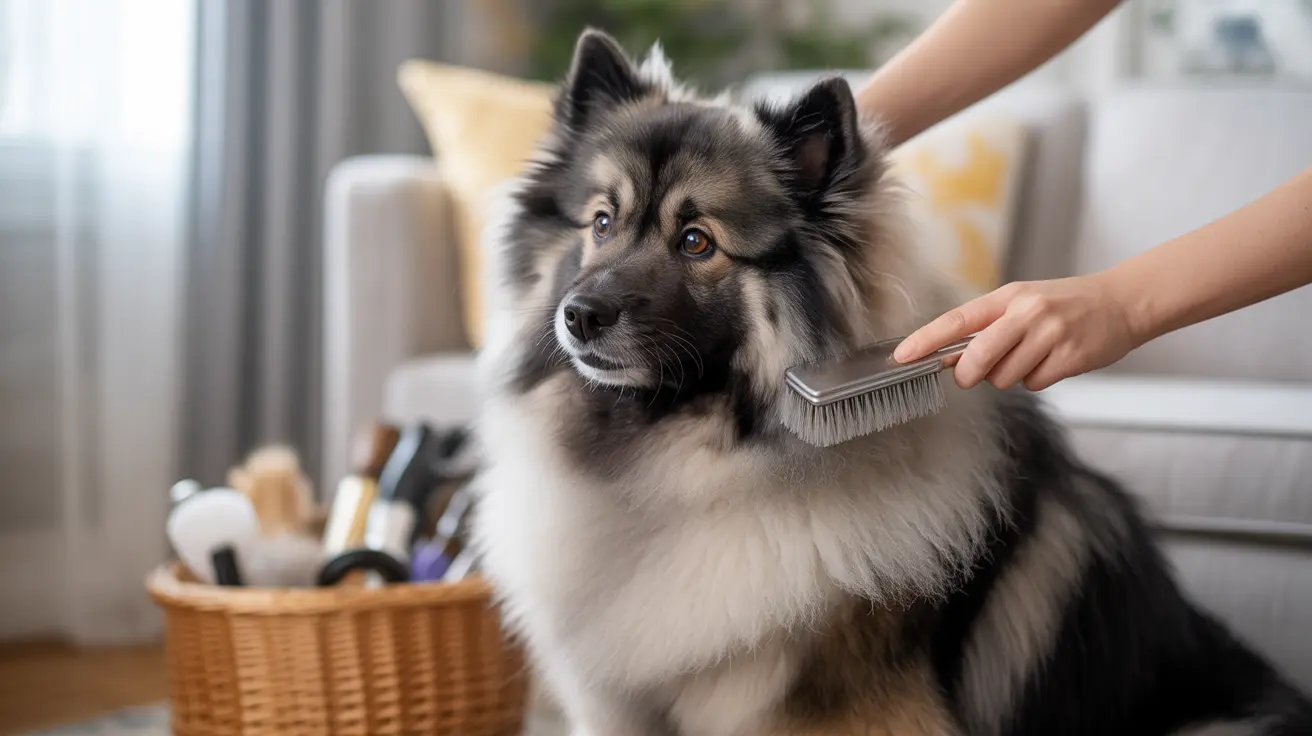The Keeshond dog, a beloved Dutch breed known for its distinctive "spectacles" and plush double coat, has captivated dog lovers for centuries. These medium-sized companions combine intelligence, affection, and loyalty in a striking package that makes them excellent family pets.
Originally serving as watchdogs on Dutch barges, Keeshonds have evolved into versatile family companions while maintaining their alert and friendly nature. Their unique appearance and engaging personality have earned them a special place in the hearts of dog enthusiasts worldwide.
History and Origins of the Keeshond Dog
The Keeshond's story is deeply intertwined with Dutch history. Named after Cornelis (Kees) de Gyselaer, a leader of the Dutch Patriot Party in the 18th century, these dogs became powerful political symbols. Their heritage traces back to ancient arctic dog breeds, sharing ancestry with Samoyeds and Norwegian Elkhounds.
As barge dogs, they proved invaluable companions on Holland's waterways, serving both as watchdogs and devoted family members. This dual role helped shape their modern temperament – alert yet gentle, protective yet friendly.
Physical Characteristics and Appearance
Keeshond dogs are immediately recognizable by their distinctive features. Males typically stand 18 inches at the shoulders and weigh around 40 pounds, while females are slightly smaller at 17 inches and 35 pounds.
Their most striking feature is the luxurious double coat, which creates a lion-like mane around the neck. The breed's signature "spectacles" – dark markings around the eyes – give them an expressive, almost human-like appearance that many find irresistible.
Temperament and Personality Traits
Known for their exceptional emotional intelligence, Keeshonds form deep bonds with their families. They're often called "velcro dogs" due to their tendency to stay close to their loved ones. Their friendly and outgoing nature makes them excellent companions for families with children.
While naturally good watchdogs, they're not typically aggressive. Instead, they alert their families to visitors with their distinctive bark before warmly welcoming approved guests.
Training and Exercise Requirements
Keeshonds rank high in canine intelligence, making them relatively easy to train. They respond exceptionally well to positive reinforcement methods and enjoy learning new commands and tricks.
These dogs require moderate daily exercise – typically a combination of walks and interactive play sessions. Their adaptable nature means they can thrive in various living situations, from apartments to houses, as long as they receive adequate physical and mental stimulation.
Grooming and Care
The magnificent double coat of a Keeshond requires regular maintenance to keep it in top condition. Weekly brushing is essential to manage shedding and prevent matting, especially during seasonal coat blows.
Despite their thick coat, they're not particularly difficult to groom with a consistent routine. Regular bathing every 4-6 weeks, combined with thorough brush-outs, will keep their coat healthy and manageable.
Health and Longevity
Keeshonds typically enjoy a lifespan of 12-15 years. While generally healthy, they can be prone to certain genetic conditions like hip dysplasia, heart problems, and progressive retinal atrophy. Regular veterinary check-ups and maintaining a healthy weight are crucial for their well-being.
Frequently Asked Questions
How much exercise does a Keeshond need to stay happy and healthy?
Keeshonds require moderate daily exercise, typically 30-60 minutes of activity. This can include walks, play sessions, and mental stimulation activities. They adapt well to their family's activity level but need consistent exercise to prevent boredom and maintain good health.
Why do Keeshonds have such distinctive "spectacles" around their eyes?
The distinctive spectacles are a breed-specific marking caused by fur patterns around the eyes. These dark lines create the appearance of wearing glasses and are considered a defining characteristic of the breed, contributing to their expressive, intelligent look.
How do I prevent my Keeshond from becoming a nuisance barker?
Early training and socialization are key to managing a Keeshond's barking tendencies. Teach the "quiet" command, provide plenty of mental stimulation, and avoid leaving them alone for extended periods. Consistent positive reinforcement helps establish good barking habits.
What is the best way to groom a Keeshond to manage shedding and prevent matting?
Regular brushing (2-3 times per week) with a pin brush and undercoat rake is essential. Pay special attention to the thick ruff around the neck and chest. Monthly baths, followed by thorough drying and brushing, help maintain coat health and manage shedding.
Are Keeshonds suitable for living in apartments, and what are their space requirements?
Yes, Keeshonds can adapt well to apartment living if they receive adequate exercise and attention. They're moderate-sized dogs that don't require a large living space, but they do need daily walks and regular opportunities for physical activity. Their strong attachment to family makes them more suited to homes where they won't be left alone for long periods.






